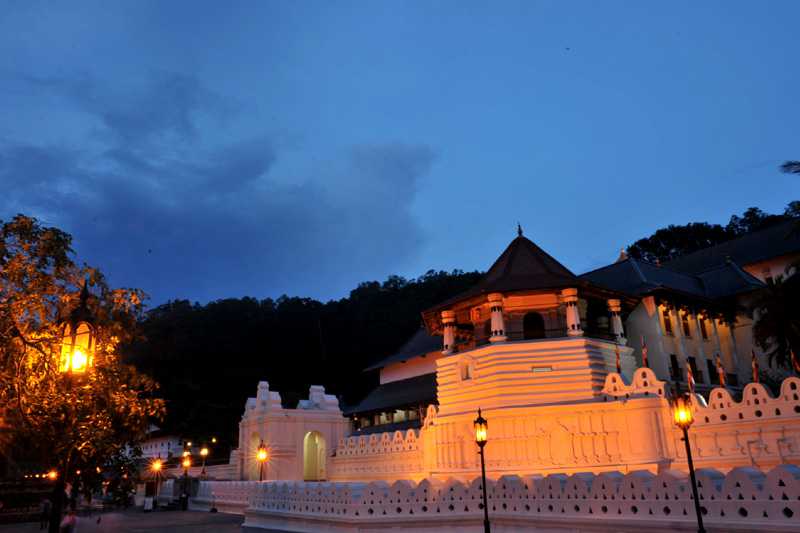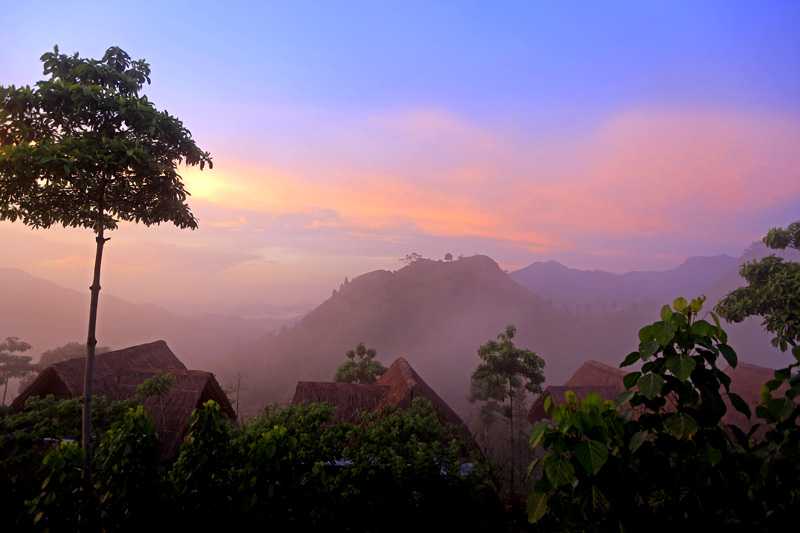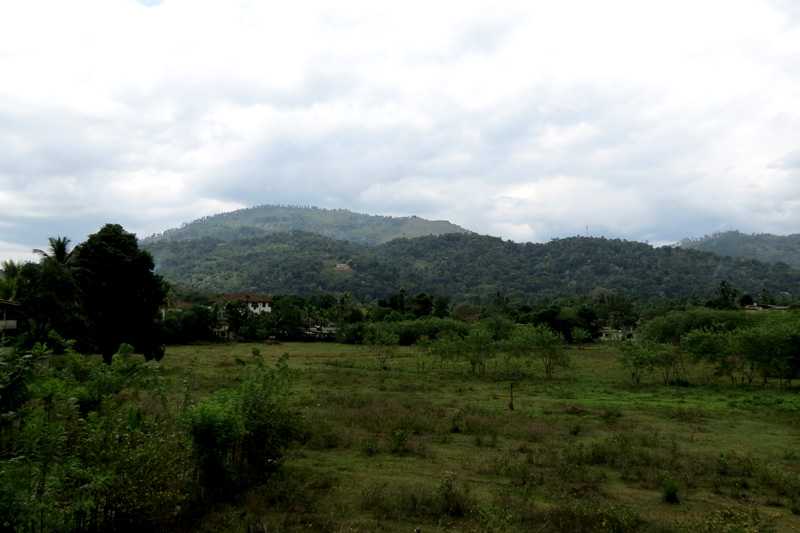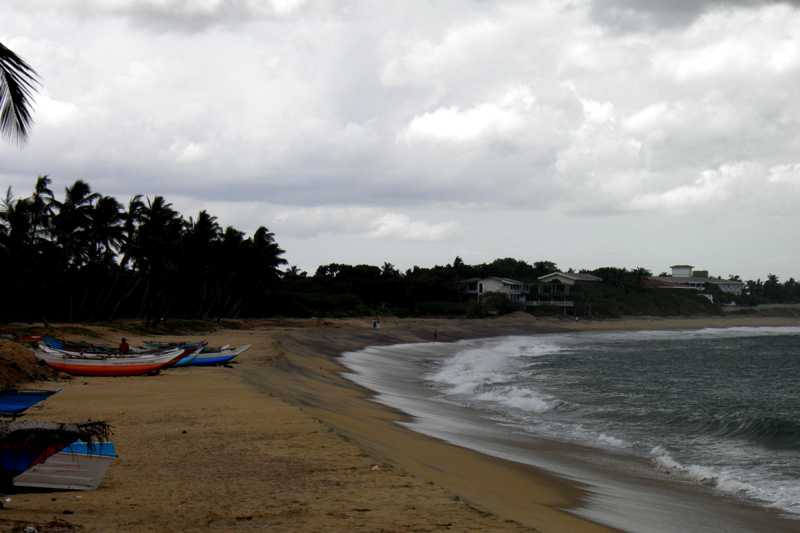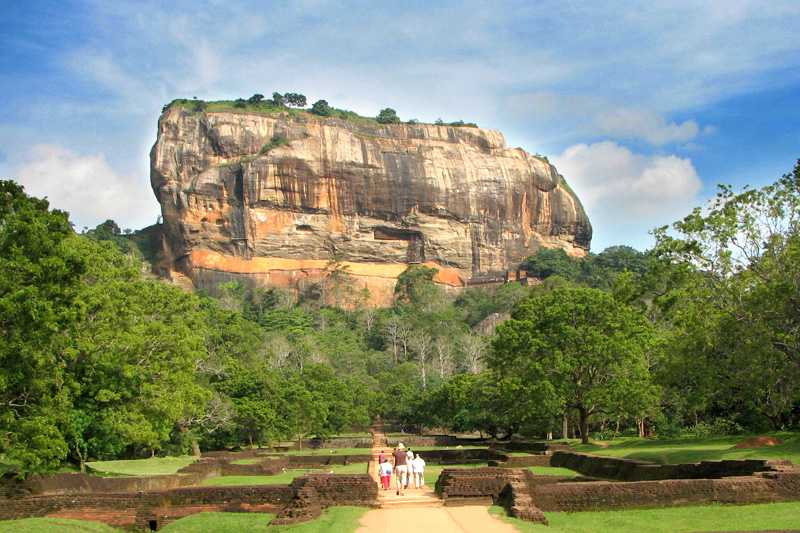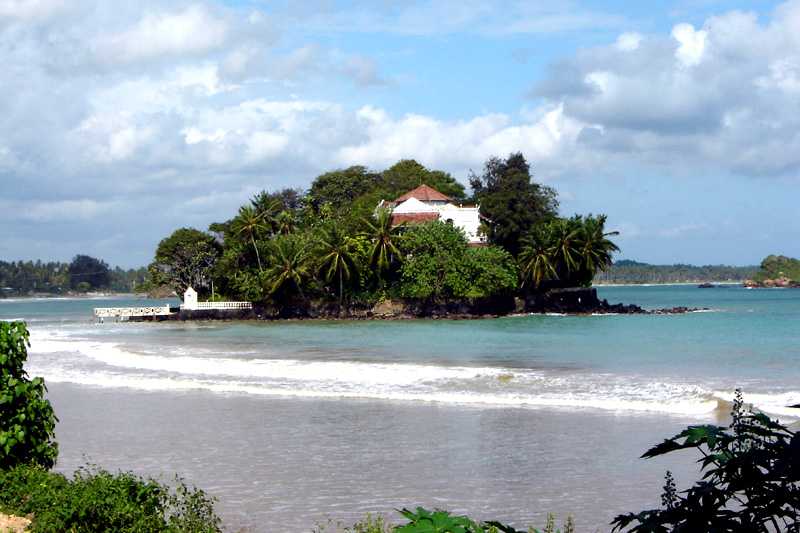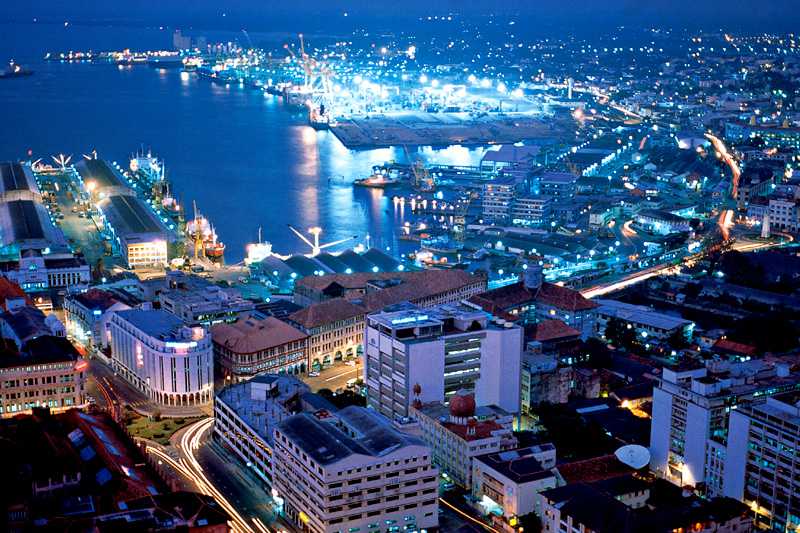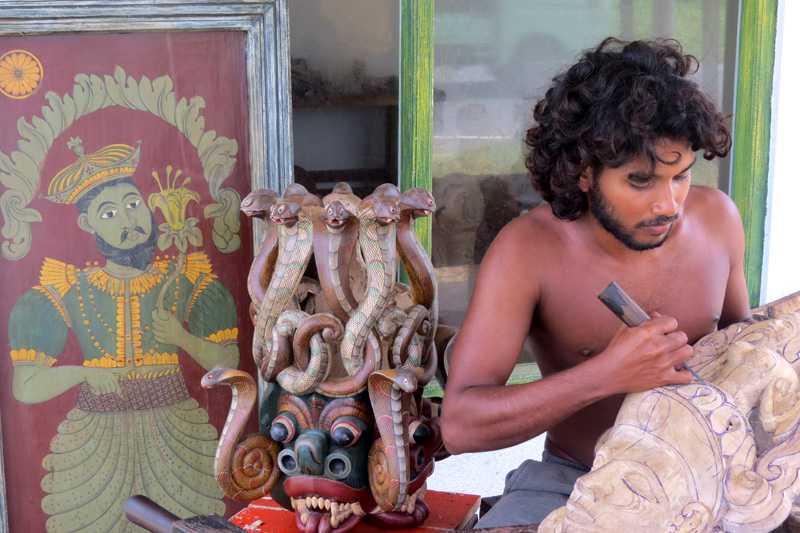Dambulla City
Located 20 km south of Habarana and 55 km north of Matale, Dambulla is a commercial town with Sri Lanka's largest produce market and is most famous for the cave temples and also for the iconic golden temple. One of the eight world heritage sites in Sri Lanka, Dambulla heritage site with a history extending from prehistoric and proto-historic times, right down to the modern period, makes Sri Lanka's heritage really splendorous. On your way to Sigiriya, it is worth stopping over at Dambulla to catch a glimpse of these wonderful cave temples, ironwood forest, rose quartz mountain and megalithic cemetery.
Cave Temples
There are several cave temples scattered in two clusters facing the south and the west at the Dambulla Rock site which is located near the geographical centre of the island standing about 180 meters from the surrounding plain. The cave temples that date back to the 1st century BCE are one of the eight World Heritage Sites of Sri Lanka. The caves are considered to be the finest storehouse of Sinhala art and sculpture. It has five caves under a vast overhanging rock, carved with a drip ledge to keep the interiors dry. In 1938 the architecture was inflated with arched walkways. Inside the caves, the ceilings are painted with complex patterns of religious images following the contours of the rock. There are images of Lord Buddha, and Bodhisattvas, as well as various gods and goddesses. Five caves are converted to shrine rooms. The caves, built at the base of a 150-metre high rock during the Anuradhapura period (1st Century BCE to 993 AD) and the Polonnaruwa period (1073 to 1250 AD), are the most inspiring of many cave temples in Sri Lanka.

King Walagamba converted the caves into a temple in the 1st century BCE. Exiled from Anuradhapura, he sought refuge here from South Indian invaders for 15 years. After reclaiming his capital, the King built a temple in thankful worship. Many other kings added to it later and by the 11th century, the caves had become a major religious centre. King Nissankamalla gilded the caves and added about 70 Buddha statues in 1190 AD. During the 18th century, the caves were restored and painted by the Kandyan Kings.
Cave No. 1 -Dev Raja Viharaya
This is the first cave temple that you come across when entering the temple through the main gate. Dev Raja Viharaya means temple of the king of gods. In this cave is a 47-foot-long reclining Buddha image depicting the passing-away of Buddha. Also there are five other images, one of which is of arhat Ananda, Buddha's closest disciple lying at the foot of the reclining Buddha image. Yet another image held in a small shrine is said to be of the God Vishnu. Cave walls are decorated with paintings that are faded away almost beyond recognition.
Cave No. 2 -Maha Raja Viharaya
Maha Raja Viharaya or the temple of the great king is the most striking and the largest cave temple of the series of the cave temples at Dambulla. It is said that this 72-foot-long, 25-foot-wide, 21-foot-high cave temple was founded by the great king Vattagamini Abhaya. The cave holds 53 images that depict various Mudras or postures.
A 18-foot-high dagoba lies at the right of the main entrance and its broad circular pedestal is ornamented with four figures of Buddha facing the four quarters. The cave is also home to a painted wooden statue of King Walagamba and another statue of King Nissankamalla who was one of the royal patrons of the temple. Within these shrine rooms is housed a collection of one hundred and fifty images of the Buddhist Order and the country's history. These statues and paintings represent many eras of Sinhala art and sculpture. In the cave are many more images of various deities as well.
When it comes to walls of the cave, the entire wall surface is replete with colorful paintings that depict the life of Buddha before and after his enlightenment as well as the stories of his previous lives. Yellow seems to be predominant in these brilliantly colored paintings. There are many more paintings illustrating history of Sri Lanka.
This cave is also famous for its vessel that collects water dripping continuously into the cave from the eastern end, even during droughts. Water collected into this vessel is used for sacred rituals.
Cave No. 3 -Maha Alut Viharaya
Maha Alut Viharaya or the great new temple which is said to have been used as a storeroom until the 18th century is a 90-foot-long, 81-foot-wide, and 36-foot-high cave and is the second largest cave which is separated from the cave no. 2 by a masonry wall. This cave also holds a large number of Buddha images and spectacular paintings. The 30-foot-long recumbent Buddha image sculpted brilliantly is quite a beautiful image in the cave. Kandyan period paintings depicting the Buddhist history and life of Buddha can be seen all over the rock surface.
Cave No. 4 -Pachima Viharaya
Pachima Viharaya or the western temple is a 50-foot-long, 20-foot-wide and 27-foot-high cave dipping steeply towards the back wall. The cave holds a number of figures of Buddha and the one lying at the Makara Thorana (a dragon archway) depicting the Dhyana Mudra or the meditation posture is very impressive.
Cave No. 5 -Devana Alut Viharaya
Devana Alut Viharaya or the second new temple which was once used as a storeroom holds a recumbent Buddha and a number of Hindu deities.
Golden Temple
This is a modern temple lying at the foot of the cave temples hill established as a monastery. A 30-metre high gilded Buddha image depicting the Dhammachakka Mudra lies atop this magnificent temple. This breathtaking gilded Buddha image was erected in 2001 with Japanese donations. The temple is called golden temple because of this gilded Buddha image.
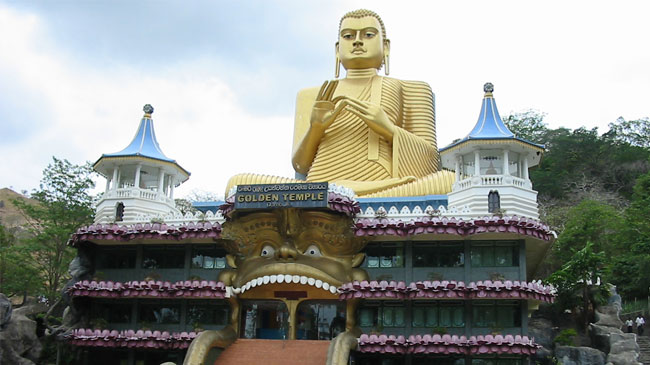
Buddhist Museum
The newly built Buddhist museum lying close to the cave temples showcases an array of antiques and a striking collection of Buddha images pertaining to Thailand, Myanmar, China, Korea, and Singapore.
Painting Museum
Dambulla Painting Museum is Sri Lanka's only painting museum that exhibits history of paintings in Sri Lanka. By stepping into this newly established museum, one could look into the evolution of the island's painting tradition from its possible prehistoric origins.
Rangiri Dambulla International Stadium
Dambulla is also famous for its international cricket stadium known as Rangiri Dambulla International Stadium. The stadium lies in a stunning setting close to the caves temples overlooking the Dambulla Tank and the Dambulla Rock. A number of international cricket matches have so far been played at this stadium which can accommodate about 30,000 spectators. The inaugural one day international match was played between Sri Lanka and England in the year 2000.
Dambulla Dedicated Economic Centre
Dambulla is home to Sri Lanka's largest produce market known as Dambulla Dedicated Economic Centre established in 1999. The economic centre consisting about 150 stalls serves as an entrepôt where farmers could meet traders and sell their produce at a fair price. Over 200 truckloads of agricultural produce are dispatched daily from this market to various parts of the island. Vegetables and fruits are grown in vast fields in and around Dambulla and it is quite a fascinating view.







